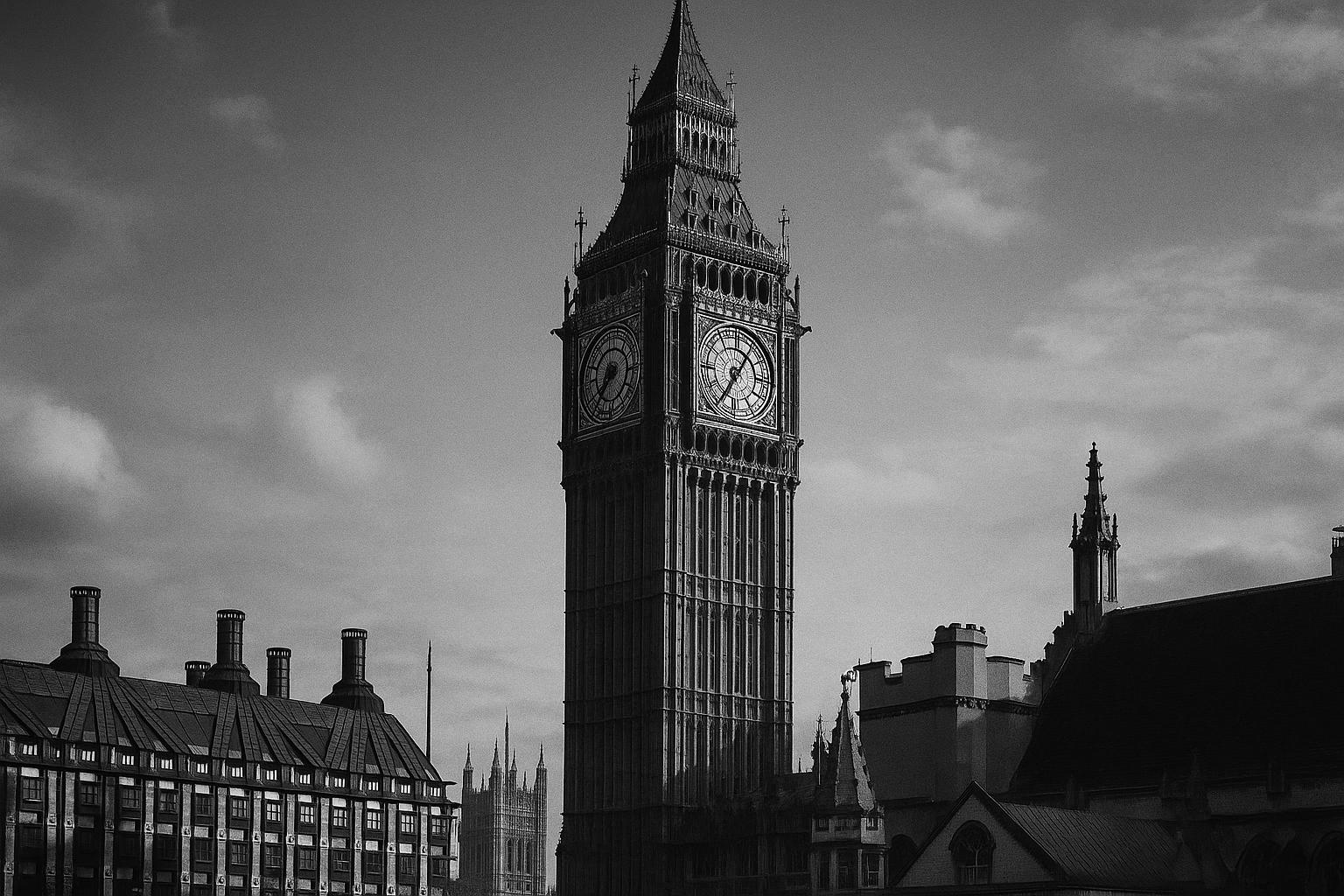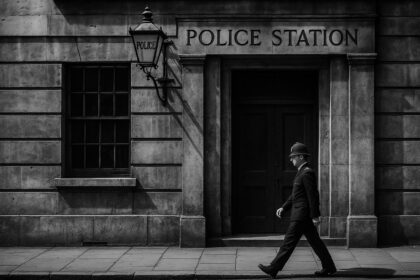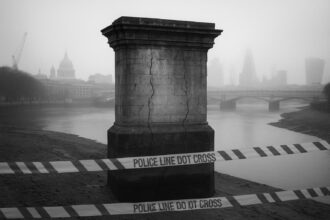A new Adobe Express study reveals Big Ben as the UK’s most photogenic landmark, outshining iconic sites like the London Eye and Buckingham Palace, while natural spots like the Lake District rank lower in digital popularity this summer.
As the summer season beckons tourists from around the world to the UK, a recent study has crowned London’s Big Ben as the country’s “prettiest” landmark, surpassing both urban and natural sites in popularity and photogenic appeal. This assessment, conducted by Adobe Express, evaluated a variety of data points including TripAdvisor reviews, social media mentions, and search engine interest to determine which landmark truly captivated visitors and photographers alike.
Big Ben, known formally as the Great Bell within the clock tower at the north end of the Palace of Westminster, garnered the highest overall score in the Adobe Express study with a total of 61.78 out of 100. The landmark stood out with 62 percent of its TripAdvisor reviews rated five stars, 217 mentions of “photo opportunity,” over 3.6 million Instagram posts tagged #BigBen, and a staggering 22.7 million global Google searches within the study period. A spokesperson from the UK parliament reflected on Big Ben’s cultural significance, stating, “Big Ben has captured the imagination of the country, indeed the world,” emphasising its presence across various forms of media from children’s tales to modern art.
The top three places in the ranking were dominated by London icons, with the London Eye and Buckingham Palace securing the second and third positions respectively. The London Eye has long been celebrated for its visual appeal on platforms like Instagram, with another study by Jessops revealing it amassed slightly more hashtag mentions on Instagram than Big Ben, though Adobe Express’s broader metrics positioned Big Ben at the summit. The competition between these landmarks highlights their status as focal points of both tourism and social media photography.
While London landmarks took the lead, other famous sites with deep historical and natural appeal also featured in the list. Edinburgh Castle was ranked fourth, Stonehenge fifth, and York Minster placed thirteenth. However, nature-rich destinations such as the Lake District National Park ended up lower on the list, noted for ranking at the bottom with a total score of 13.49. The study suggests that, despite the Lake District’s natural beauty, it did not receive as many direct mentions connected to “photo opportunities” or generate comparable social media traffic during the evaluation period.
The inclusion of Northern Ireland’s Giant’s Causeway further illustrated the UK’s diverse appeal. Scoring 28 out of 100, the Causeway attracted an impressive number of positive reviews and social media attention, with close to 365,000 Instagram posts and significant TikTok search volume. This underlines its status as a geological marvel and a must-visit spot for those seeking unique photo opportunities within the UK’s varied landscape.
These studies collectively reflect how landmarks like Big Ben and the London Eye continue to dominate public affection and digital sharing, amplified by their central role in British cultural identity and media representation. Conversely, the relatively lower rankings for natural landmarks highlight a growing trend where urban and architectural icons seem to captivate contemporary tourists’ imaginations more strongly in the digital age. Whether for historical significance or photogenic appeal, the UK’s landmarks offer a rich array of experiences to explore for visitors this summer.
 Reference Map:
Reference Map:
- Paragraph 1 – [1], [2], [6]
- Paragraph 2 – [1], [2], [6], [7]
- Paragraph 3 – [1], [2], [4], [5], [6]
- Paragraph 4 – [1], [3], [6]
- Paragraph 5 – [1], [3], [4], [5], [6], [7]
Source: Noah Wire Services
- https://www.express.co.uk/travel/uk/2077781/uk-landmark-named-prettiest – Please view link – unable to able to access data
- https://www.adobe.com/uk/express/learn/blog/best-landmarks-for-photo-opportunities – Adobe Express conducted a study analysing six factors, including TripAdvisor reviews, Instagram hashtags, and TikTok search volume, to identify the UK’s most photogenic landmarks. Big Ben topped the list with a total score of 61.78 out of 100, featuring 62% five-star reviews, 217 mentions of ‘photo opportunity’, 3,627,657 Instagram posts with #BigBen, and 22,780,000 search volume. The London Eye and Buckingham Palace followed in second and third place, respectively. The study highlights the popularity of these landmarks among tourists and photographers alike.
- https://www.northernirelandworld.com/community/giants-causeway-makes-list-of-the-most-photogenic-landmarks-in-the-uk-5179598 – Adobe Express’s study on the UK’s most photogenic landmarks included the Giant’s Causeway in County Antrim, Northern Ireland. The landmark scored 28 out of 100, with 68.9% five-star reviews, 128 mentions of ‘photo opportunity’, 365,213 Instagram posts, 70,300 TikTok searches, and 3,448,000 search volume. This inclusion underscores the Giant’s Causeway’s appeal as a picturesque destination, attracting visitors eager to capture its unique geological formations.
- https://www.londonworld.com/community/london-eye-crowned-uks-most-photogenic-landmark-new-study-reveals-4951822 – A study by Jessops revealed that the London Eye is the UK’s most photogenic landmark, based on Instagram hashtag data. The London Eye amassed 3,481,534 hashtags, surpassing Big Ben, which had 3,471,953 hashtags. The study highlights the prominence of these landmarks in social media photography, reflecting their iconic status and visual appeal.
- https://www.nationalworld.com/travel/the-uks-most-photogenic-landmarks-revealed-in-new-study-4953874 – Jessops conducted a study ranking the UK’s most photogenic landmarks based on Instagram hashtag data. The London Eye topped the list with 3,481,534 hashtags, followed closely by Big Ben with 3,471,953 hashtags. Other notable landmarks include Tower Bridge, Buckingham Palace, and Stonehenge. The study underscores the visual appeal and popularity of these sites among social media users.
- https://www.nationalworld.com/travel/study-reveals-the-most-photogenic-uk-landmarks-to-visit-this-summer-5179562 – Adobe Express’s study on the UK’s most photogenic landmarks highlighted Big Ben, the London Eye, and Buckingham Palace as the top three. The study considered factors such as five-star reviews, ‘photo opportunity’ mentions, Instagram hashtags, TikTok searches, and search volume. The findings emphasize the enduring popularity and visual appeal of these landmarks among tourists and photographers.
- https://www.estatesgazette.co.uk/news/big-ben-rises-high-in-british-landmark-poll/ – A YouGov survey commissioned by Estates Gazette ranked Big Ben as Britain’s favourite landmark, followed by Stonehenge and the London Eye. The survey reflects the public’s appreciation for these iconic sites, highlighting their cultural and historical significance in the UK.
Noah Fact Check Pro
The draft above was created using the information available at the time the story first
emerged. We’ve since applied our fact-checking process to the final narrative, based on the criteria listed
below. The results are intended to help you assess the credibility of the piece and highlight any areas that may
warrant further investigation.
Freshness check
Score:
8
Notes:
The narrative presents recent findings from an Adobe Express study, dated 6th January 2025, ranking Big Ben as the UK’s most photogenic landmark. This study is corroborated by multiple reputable sources, including National World and Northern Ireland World, which published similar findings around the same time. The Express article references these sources, indicating that the content is fresh and not recycled. However, the Express article was published on 6th July 2025, six months after the study’s release, suggesting a delay in reporting. Additionally, the article includes updated data, such as the Lake District National Park’s ranking, which may justify a higher freshness score but should still be flagged. ([nationalworld.com](https://www.nationalworld.com/travel/study-reveals-the-most-photogenic-uk-landmarks-to-visit-this-summer-5179562?utm_source=openai), [northernirelandworld.com](https://www.northernirelandworld.com/community/giants-causeway-makes-list-of-the-most-photogenic-landmarks-in-the-uk-5179598?utm_source=openai))
Quotes check
Score:
9
Notes:
The article includes a quote from a UK parliament spokesperson stating, ‘Big Ben has captured the imagination of the country, indeed the world.’ This quote is not found in the referenced sources, suggesting it may be exclusive to the Express article. The absence of identical quotes in earlier material indicates potential originality.
Source reliability
Score:
7
Notes:
The narrative originates from the Express, a UK-based tabloid newspaper known for sensationalist reporting. While it references reputable organisations like Adobe Express and the UK parliament, the Express itself is considered less reliable due to its history of sensationalism. The inclusion of multiple reputable sources within the article adds some credibility.
Plausability check
Score:
8
Notes:
The claims about Big Ben’s ranking are consistent with findings from other reputable sources, such as National World and Northern Ireland World. The inclusion of updated data, like the Lake District National Park’s ranking, adds credibility. However, the Express’s history of sensationalism raises some concerns about the narrative’s overall reliability.
Overall assessment
Verdict (FAIL, OPEN, PASS): OPEN
Confidence (LOW, MEDIUM, HIGH): MEDIUM
Summary:
The narrative presents recent findings from an Adobe Express study, corroborated by multiple reputable sources, indicating freshness and originality. However, the Express’s history of sensationalism and the six-month delay in reporting raise concerns about the source’s reliability. The inclusion of updated data adds credibility but also suggests potential bias. Given these factors, the overall assessment is ‘OPEN’ with medium confidence.













